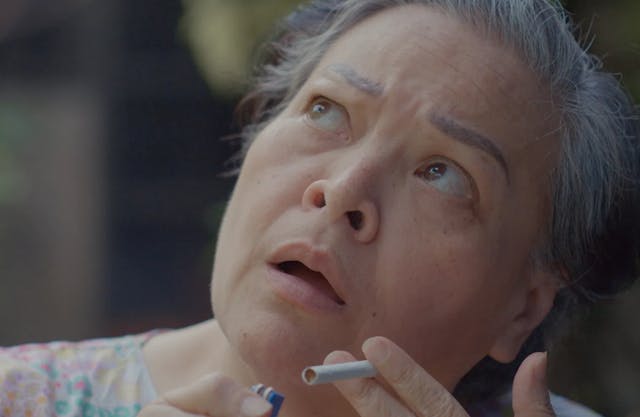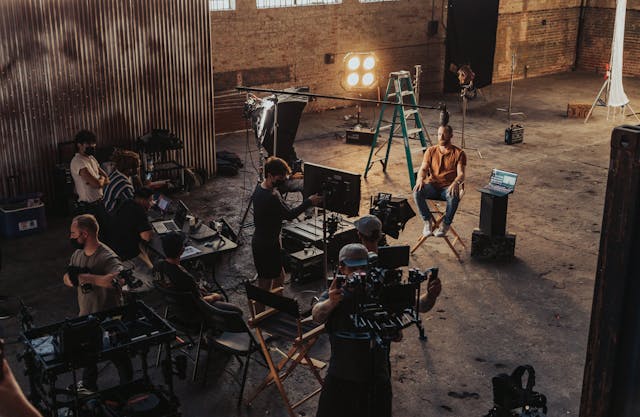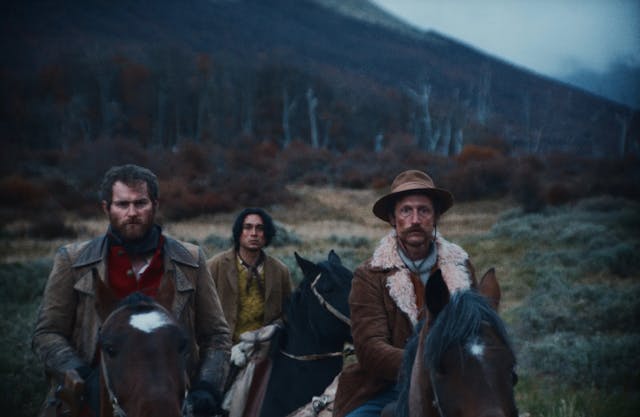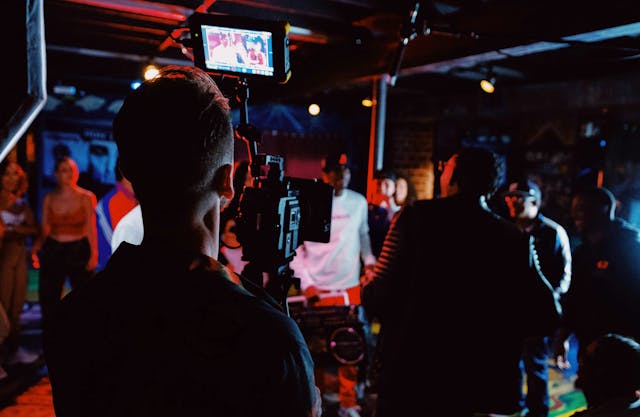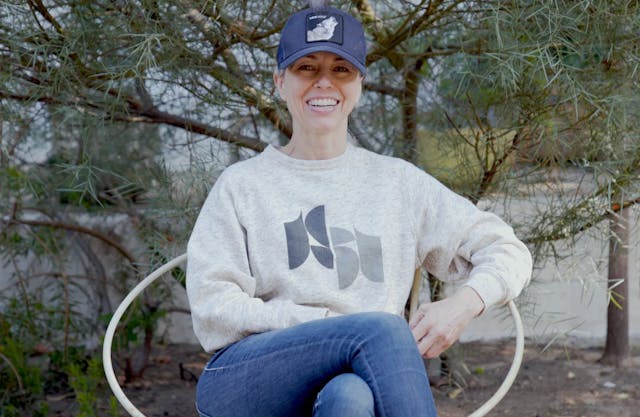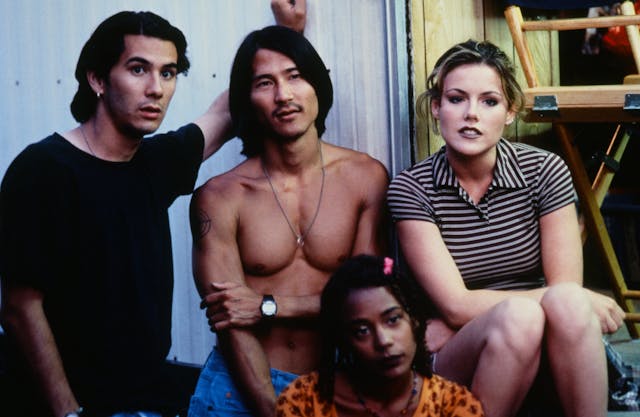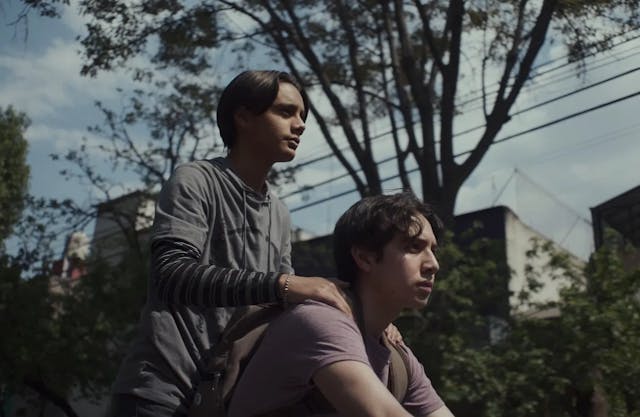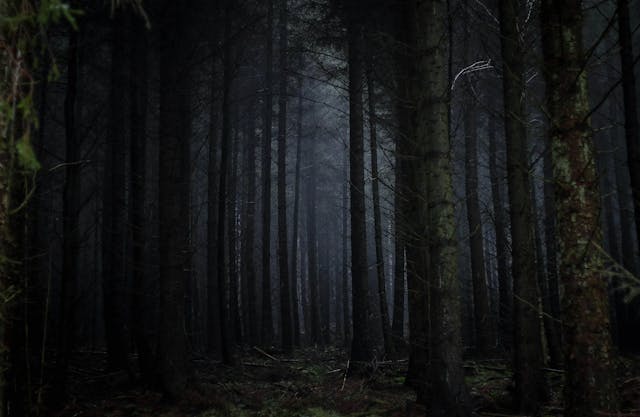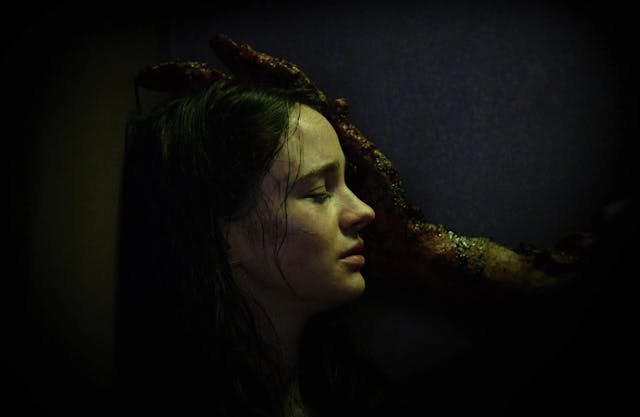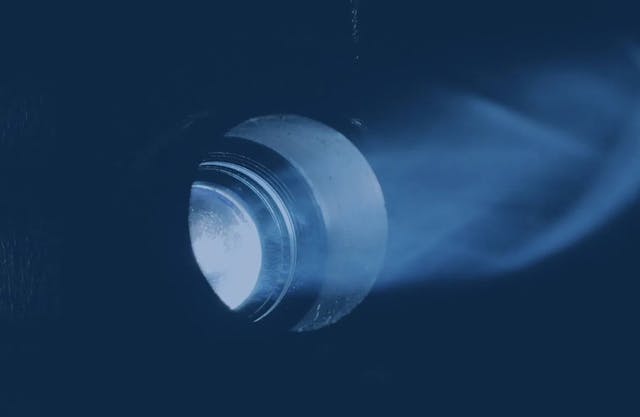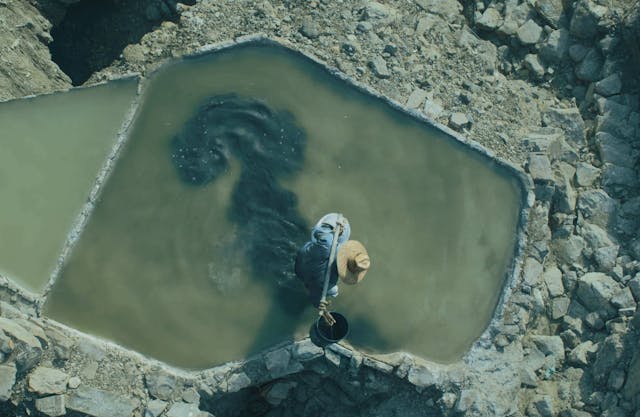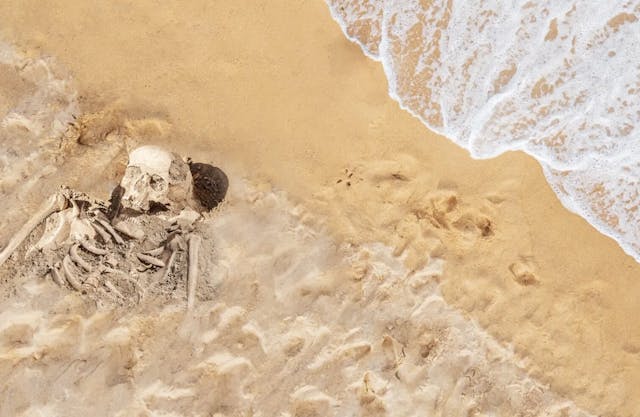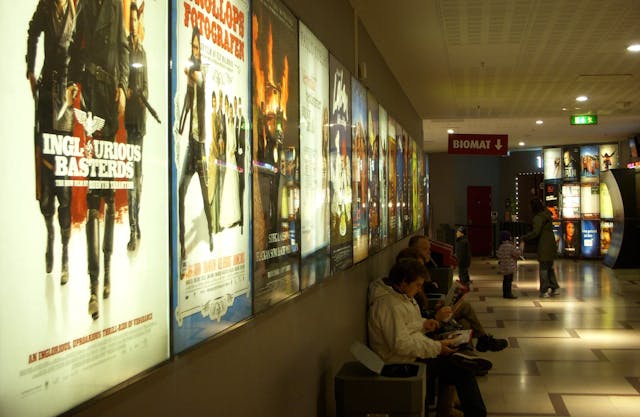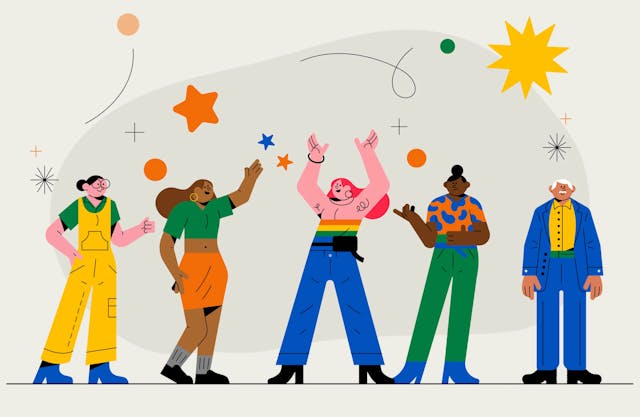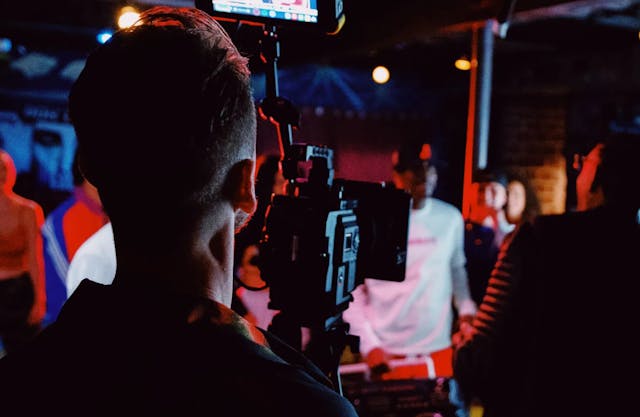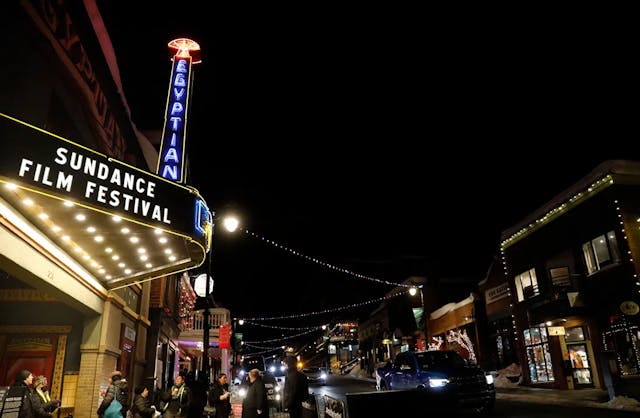"Sister Carrie": Daniel Nearing's Luscious Indie Movie Romance
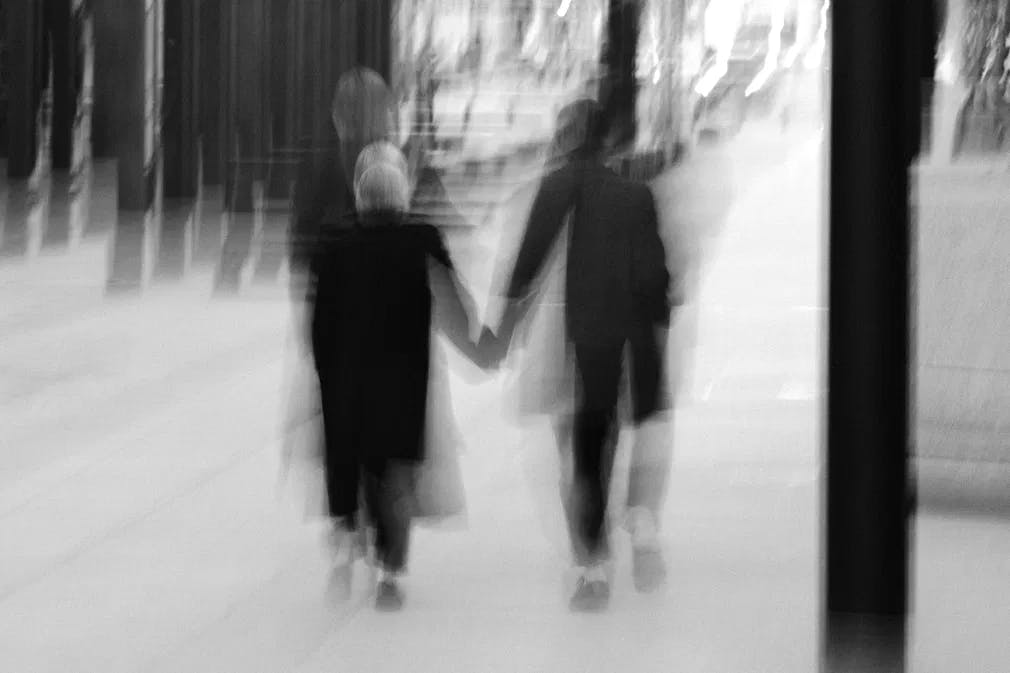
Daniel Nearing may have been born in Canada but found his bliss in Chicago, where he lives and works. He strongly connects with the African American community, which figures extensively in his movies, from his critically acclaimed debut, “Chicago Heights,” to the latest, “Sister Carrie.” The director proves that with sensibility, technical savvy, and love of the film language, low budget movies can shine as much as expensive studio products. Perhaps even more.
"Sister Carrie" is an ambitious adaptation of Theodore Dreiser’s novel. The title character is a country girl in late XIX Century America who migrates to Chicago to make a life for herself. Nearing takes the “fallen woman” prototype of the romantic novels of yore and conjures around it a phantasmagoric cinematic exercise, combining the past with the present, art and artifice, and a wealth of timeless cultural references. The plot hops from Chicago to Montreal to Paris. Eve Rydberg is heartbreaking as the tragic heroine, and International ballet star Fabrice Calmels is a romantic hero for the ages. His presence allows for dreamy dancing sequences that merge seamlessly with the social realism of the surface.
Literature to Film, Page to Screen
"Sister Carrie" is the kind of unapologetically challenging film that contemporary Art House cinemas have abandoned in favor of more commercial works. We reached out to Nearing to talk about his movies and his career as an indie filmmaker. The interview has been edited for clarity and length.
Popflick: Before talking about “Sister Carrie,” I wanted to know why you are a filmmaker. How did you decide to follow this path?
Daniel Nearing: I always wanted to be a writer. As I went up through various levels of education, I realized that it was not a viable career path in terms of the competition. So, I picked something that was probably even more competitive! I started studying Film and earned my MFA in Canada - I'm a Canadian and American citizen -. Then, I started making documentaries for Discovery Channel, CBC (Canadian Broadcast Corporation), Newsworld, Bravo, and Sports Network, the ESPN affiliate in Canada. After about ten years, I moved to the United States and took up narrative and dramatic filmmaking. Surprisingly, I discovered that it was a venue where I could be more truthful than with the documentary format. There's something about being able to go into the interior lives of your characters that you can't do in a documentary as much as you try.
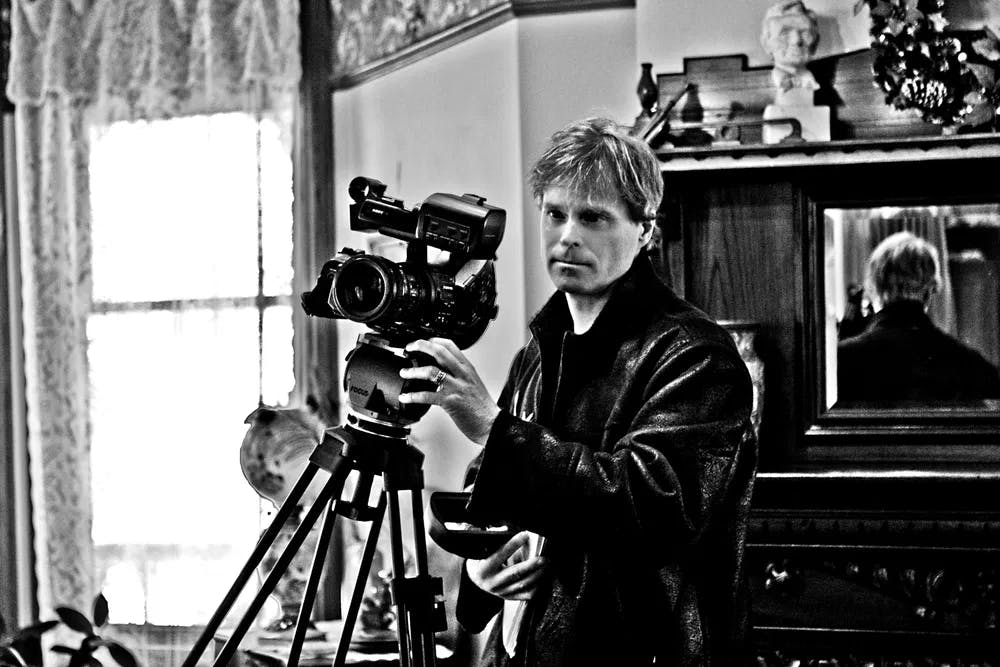
Daniel Nearing operates the camera, shooting one of his films. / Photo courtesy of Daniel Nearing.
Popflick: When you did this transition, were you tempted to go into a more commercial path?
Daniel Nearing: I was! I had a couple of screenplays optioned, and they didn't quite go through. They were entirely commercially oriented, and I realized I didn't want to be part of that racket. I've reached a point where I want to tell an authentic story, even if it is elusive for many audiences.' My heroes are not filmmakers as much as they are writers. People like James Joyce, E.L. Doctorow, and Michael Ondaatje. These writers are not quite as accessible as George Lucas, but they have something very important to communicate about the human experience. I want to think that in this universe where we're seeing increasing channels and film festivals, where there is a weariness of formulas, we're going to see an evolution in our approaches to narrative. I hope we'll treat it more maturely than we're seeing in comic book franchise movies.
Popflick: I saw your first movie, “Chicago Heights,” after watching “Sister Carrie.” They are separated by almost a decade, yet they are both of a piece, with striking high-contrast black & white cinematography. I was surprised that you had such a distinctive style so early. Is personal style a formula filmmakers have to crack?
Daniel Nearing: I believe you want to cultivate your vision and technical approach to storytelling. As it happened, my films are what I characterize as period-less. They say more about the time in which they're made than in which they're set. So, even if it's a period piece, you're saying something about 2024. The more things change, the more things stay the same. In Chicago, race relations and all kinds of other issues are still manifest today as they were 100 years ago. So I think it's important to cultivate that. And thank you for mentioning that black and white is my milieu. I think you could be more real somehow in black and white. I don't I don't know why. It's also more forgiving from a production standpoint.
Finding "Sister Carrie"
Popflick: How did “Sister Carrie” start?
Daniel Nearing: I got support from the John Simon Guggenheim Foundation to make a film that I would call "Petite Monde," and it would be a portrait of Paris. I met with Jean-Claude Carriere, who wrote "Belle du Jour" (1967) and "The Discreet Charm of the Bourgeoisie" (1972) for Luis Buñuel. I met him at a film festival in Paris and had lunch with him. He picked French fries off my plate! I told him my idea was to follow a constellation of characters who never really meet, but collectively, while watching this film, you get a portrait of the city. His response was, 'There is no conflict. You can't tell a story like this!' I left that meeting disheartened and found myself picking up a copy of "Sister Carrie" from a remainder stand outside the Shakespeare and Company bookstore along the Seine. I sat down next to the Notre Dame Cathedral, and I started reading the book. I'd already read it when I was 18 or 19 and thought I hated it. I read it again, and I was taken with it. I started to adapt it. It's a great work of American literature. It came out in 1900 and was a huge, controversial novel when it was published because it was a proto-feminist book. The protagonist is a woman making decisions for herself and forging a path in a culture that didn't support that endeavor.
Popflick: You did the cinematography as well as writing and directing. Was that by necessity or by design?
Daniel Nearing: Both reasons. Shooting in black and white is more forgiving when you shoot in a highly contrasting approach. The background, the absence of set decoration, design, and props fall away, and you're focused more on character. But really, I would not have done it purely for that reason. I did it because there's an authenticity when you can get granular on the human face and emotions and go into the quiet moments. I think black and white lends itself to the experience of isolation, loneliness, and longing central to the film I was making.
Popflick: The movie is filled with references to many works of literature, art, photography, and even opera. I perked up when I noticed a frame resembling an Edward Hopper painting. I know even Marvel movies do that, but I wanted to ask you why you do it. What do you get out of it?
Daniel Nearing: You are the first to spot "New York Movie" represented in that frame. Thank you for that! It all ties back to that notion of periodlessness. Looking at the literary backbone of "Sister Carrie," you find Dumas' "The Lady of the Camellias," which came before it. And prior to that, Prévost’s “Manon Lescaut.” These French Romantic novels are protofeminist in their design, but they all, for one reason or another, find some way to kill characters and women in particular. The beautiful girl has to die. And here we were, in the wake of the MeToo movement, trying to wrestle with our depiction of women in films. I thought, 'Well, let's look at this. Let's indict the male gaze but celebrate it at the same time because there are incredibly beautiful films, despite the fact that they objectify the women that are at the center of them.'
Popflick: The movie feels like a period piece and is very convincing, even if you are shooting in modern Chicago. How hard was it to build that illusion?
Daniel Nearing: It was challenging, and it involved several things. One is the work of Kat Quintian, who came in and worked on stuff in postproduction to have a much cleaner look to the black and white than what I shot. But I didn't just shoot black and white in those opening sequences. I shot without a lens. I think this is the first film shot technically without a lens. We have what we call pinhole videography. Now, pinhole video. We've always had pinhole photography, where you shoot and collect just a tiny bit of light through a hole in a lens cap. Photographers have been using this for a century or more, but it was never possible in filmmaking. You couldn't get the exposure that you needed for motion pictures. But now we can do it because these digital cameras have extremely high ISO. So, I shot without a lens on multiple occasions. The sequences where you see all kinds of refraction and light drifting around were shot deliberately to show a pre-cinema type of feeling and make it seem more authentically of its time.
Popflick: I can’t really pinpoint it, but there is a moment when you realize that the movie is timeless and not necessarily a period piece. Were you risking making the audience lose their bearings? Is that a problem you think about?
Daniel Nearing: It is a reality that I'm reconciled with. I consciously make elusive, challenging films. My last movie was really well received, but when my father sat down and watched it at a film festival, he came up to me after and said, 'When I go to movies, I don't expect to have to work!' I'm sorry for making audiences work. I think there is a future of cinema that we need to embrace, where you will be more challenged than you're used to being challenged. It will be less of a popcorn experience than an immersion in imagination, vision, and feeling. That's the intent.
Dance on the Edge of a Grave
Popflick: There’s a lot of dancing in the movie, and the world-famous ballet dancer Fabrice Camels has a pivotal role as Carrie’s paramour. Why did you include dancing as a crucial element in "Sister Carrie"?
Daniel Nearing: If you look at the story's structure, it happens entirely after the first act. It occurs entirely in the imagination of a man in jail, the foreman (Cameron Knight). He was in love with Carrie. We know that he murdered his wife, but we don't know if he murdered Carrie even at the end. And that is a question that comes up subtly throughout if you look closely at the film. The dance sequences were meant to say, 'You're living in the imagination of a man who wishes he was this perfect specimen of masculinity' that Fabrice Calmels inhabits in Armand Duval, the character he plays.
Popflick: The movie was made when you were Chicago's artist-in-residence, and a Guggenheim Fellowship sponsored it. Is that the only way a film like this can be made?
Daniel Nearing: I like to think we live in a world where cinema has been completely democratized. I am fortunate to work with the David Lynch School of Cinematic Arts. David Lynch himself talks about how there is no distinction. You follow your heart and let the audience fall in any way it may. And I think breaking from formula and telling things as authentically as possible is super important in this era. You can do it with an iPhone. Steven Soderbergh shot two features on an iPhone, right? We have the latitude now to create something with pretty decent production values just by following our hearts' way.
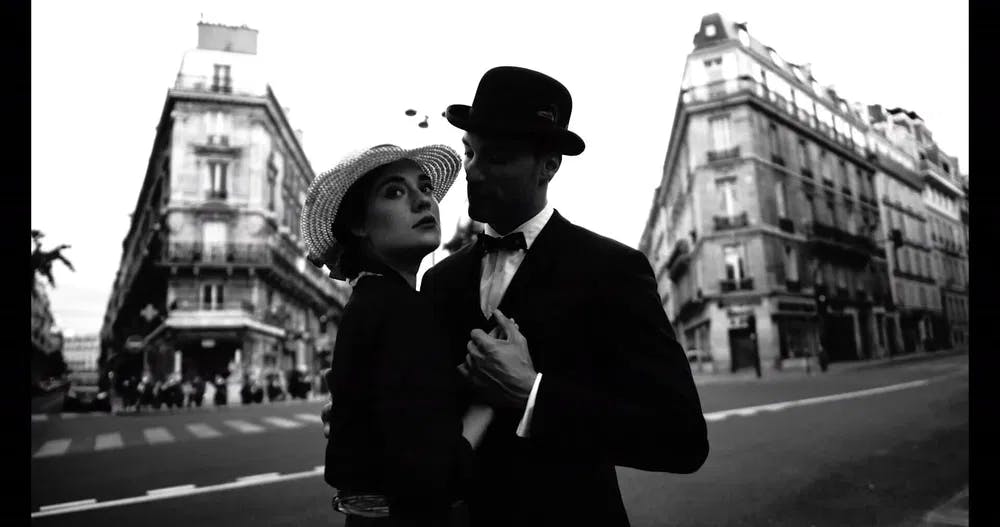
We'll Always Have Paris: Rydberg and Calmels seek refuge in the City of Lights in "Sister Carrie" / Photo courtesy of 923 Films.
Popflick: Some scenes occur in the Notre Dame Cathedral in Paris. I understand you shot before the fire that destroyed it in 2019. How did you feel when that happened? It's a tragedy that fits the movie's themes, with the fragility of the past and our world.
Daniel Nearing: I love that observation. I just got a little goosebumps all up and down when you said the fragility of of the past and our world. It was hard to be aware of and witness it on the news. I wasn't there when the fire happened, but I've done much work in Paris. I wrote my two previous movies, "Chicago Heights" and "Hogtown" there and went back to film "Sister Carrie." There's a strong connection with Paris in all three films. I love it. Every time I go, it's a pilgrimage. I hope that when I return, uh, it'll be open again.
Popflick: Your movies pack a lot in a short running time. Both “Chicago Heights” and “Sister Carrie” are a bit over an hour. Is brevity important for you? Why?
Daniel Nearing: "Sister Carrie" started as a four-hour rough cut! There's an admonition in editing: 'Keep cutting, keep cutting, keep cutting.' This came through my documentary experience, too, where I would have some 40 hours of footage and needed to cut it down into a 52-minute or 48-minute piece for the Discovery Channel. You need to kill your darlings. You need to find stuff that heeds to your intent as a filmmaker. I believe in and recognize my audiences. They've been really kind. These films are challenging. You don't want to make them drag out and get people caught up in the machinery of traditional narrative storytelling. This is all about the feeling and the intent. And letting go of our expectations of structure and cinematic storytelling.
Chicago's Favorite Adoptive Son
Popflick: You're a Canadian filmmaker but have a strong bond with Chicago. How did that happen? What did you find in Chicago?
Daniel Nearing: Chicago is such a complex city! As a Canadian, moving here was scary simply because, you know, the murder rate in Toronto might be 60 cases in a year. In Chicago, it's in the mid-hundreds, and crime is a very serious problem. So, it took me a while to realize that Chicago is a city of neighborhoods. It's incredibly diverse. You can see it in "Hogtown." It's multiracial and multilingual, with people coming from different economic perspectives. It's been characterized by Mayor Rahm Emanuel and others as the most American of American cities. If you're trying to do a portrait of America, I think the prism is Chicago. I originally wrote "Hogtown" as a novel set in Toronto, and I transposed it to Chicago because I was living and working here. Ernest Hemingway lived in Toronto and here, too! He was actually born in Oak Park. So there was that connection, too.
Popflick: Most of your movies are concentrated on African American characters. Are you ever concerned about cultural appropriation when you make these movies?
Daniel Nearing: Absolutely. When I started, I lived and worked just south of Chicago Heights. It was a community where I could find actors and film. One day, a gentleman knocked on my door and said, 'I need to speak with you.' His name was William Gray. He had heard about this production and said, 'What do you think you're doing? Who are you to think that you can tell an African American story?' And I said, 'I don't know, but if you would do me the great favor of reading the screenplay and sharing your thoughts and letting me know if you think it's okay, uh, I'd be grateful.' He read it, and he loved it. I ended up offering him a part in the film, and he was very happy to take it. He plays the writer, the elderly man who narrates the entire story.
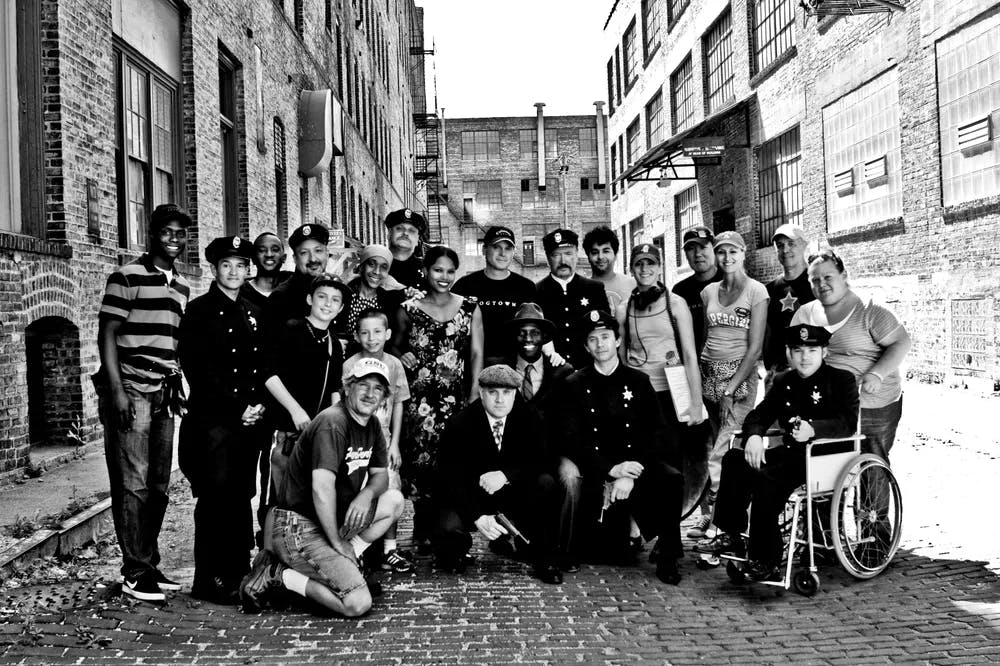
Daniel Nearing and crew, during the production of "Hogtown." / Photo courtesy of Daniel Nearing.
So yes, cultural appropriation is something that you're always aware of and careful about. But at the same time, if you think too much about these things, we start to build these barriers. I don't subscribe to the notion that we can't tell stories from the perspectives of others. The minute we do that, we become ethnocentric. And ethnocentrism is racism to a certain degree. We need to be very, very careful about that.
Popflick: When “Chicago Heights” came out, you got a very positive review from Roger Ebert, who was at the peak of his influence as a film critic. How important was that for you and the movie?
Daniel Nearing: It's one of those moments you don't forget. Somebody texted me and said, 'Have you seen this?' I popped it open and saw his review, which really changed my development as a filmmaker. Others have said this. Martin Scorsese had a clipping of the first review that Roger Ebert ever wrote about one of his movies that he carried in his wallet. Whenever he felt down, he would open it up and read it to reassure him that he was on the right path as a filmmaker. My experience is comparable to a certain extent, but not just that. I think it helped to leverage attention. He ended up naming us to his list of the best art films of that year. It ended up helping to attract the talent for "Hogtown" and "Sister Carrie" and recognition from the Guggenheim and the city of Chicago. I can't say it would have happened without that review. So, it tells you how important media voices can be and how film critics can influence the trajectory of a film and a filmmaker's entire career.
Popflick: What are you working on right now? What's your next movie?
Daniel Nearing: I'm torn between what we call a bildungsroman in literature, a novel of development. One of the first screenplays I ever wrote is sort of about my youth. The other thing that I'm working on is attempting to cut "Chicago Heights," "Hogtown," and "Sister Carrie" into a single piece. They are all black and white. They're all period films, multilingual and multiracial, and all share the same intent. They explore isolation, loneliness, and longing. I have no idea if it can work. No idea at all! I have this 300-plus-page script. It will end up being one big film, and maybe it will replace the three others.
Want to get an email when we publish new content?
Subscribe today